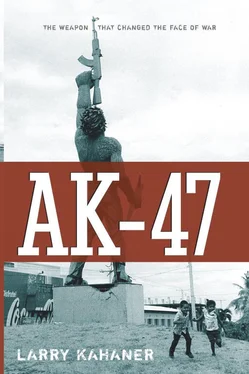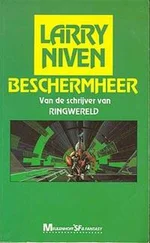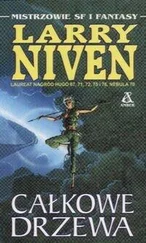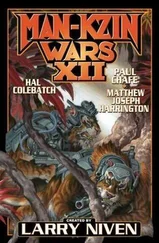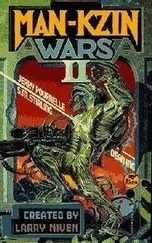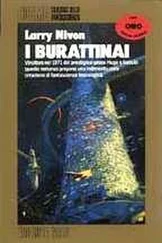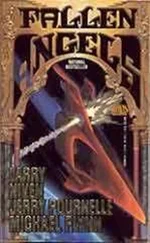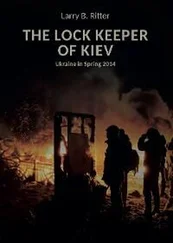Larry Kahaner - AK-47
Здесь есть возможность читать онлайн «Larry Kahaner - AK-47» весь текст электронной книги совершенно бесплатно (целиком полную версию без сокращений). В некоторых случаях можно слушать аудио, скачать через торрент в формате fb2 и присутствует краткое содержание. Город: Hoboken, Год выпуска: 2007, ISBN: 2007, Издательство: John Wiley & Sons, Inc., Жанр: История, military_history, на английском языке. Описание произведения, (предисловие) а так же отзывы посетителей доступны на портале библиотеки ЛибКат.
- Название:AK-47
- Автор:
- Издательство:John Wiley & Sons, Inc.
- Жанр:
- Год:2007
- Город:Hoboken
- ISBN:9780470315668
- Рейтинг книги:3 / 5. Голосов: 1
-
Избранное:Добавить в избранное
- Отзывы:
-
Ваша оценка:
- 60
- 1
- 2
- 3
- 4
- 5
AK-47: краткое содержание, описание и аннотация
Предлагаем к чтению аннотацию, описание, краткое содержание или предисловие (зависит от того, что написал сам автор книги «AK-47»). Если вы не нашли необходимую информацию о книге — напишите в комментариях, мы постараемся отыскать её.
AK-47 — читать онлайн бесплатно полную книгу (весь текст) целиком
Ниже представлен текст книги, разбитый по страницам. Система сохранения места последней прочитанной страницы, позволяет с удобством читать онлайн бесплатно книгу «AK-47», без необходимости каждый раз заново искать на чём Вы остановились. Поставьте закладку, и сможете в любой момент перейти на страницу, на которой закончили чтение.
Интервал:
Закладка:
Without any way to trace the ammunition to their buyers, UN investigators were stymied. Not even the manufacturers were able to identify the original recipients of the ammunition. Based on the cartridge configurations, however, the Bulgarian and Chinese cartridges were probably fired from AKs. Beyond that, nothing else could be determined, and the attackers remain at large.
The incident at Gatumba camp remains a flash point for the region. Fighting continues. Some FNL troops have confessed to the Gatumba murders, and may be tried for their crimes. Without additional physical evidence, however, most participants may never be brought to justice.
Proponents of marking and tracing claimed that linking ammunition to buyers might curtail such attacks—and subsequent mistaken retaliations escalating to regional war—if perpetrators believed there was a high probability they would be caught. Opponents contended that unscrupulous gun brokers will always find a way to sell unmarked goods, and a black market in unmarked ammunition and guns will undoubtedly develop.
Even if marking and tracing were to begin tomorrow, however, there simply are too many older guns and caches of ammunition around to make any difference for the foreseeable future. Particularly in the case of AKs, it could take fifty years for some of today’s weapons to cease working; that, combined with the guns’ high tolerance for poorly made and deteriorating ammunition, means they could be functional and untraceable for decades. Johan Peleman, a Belgium-based arms investigator who has worked for the United Nations, put it starkly: “Tracing a twenty-year-old Kalashnikov, back to whoever delivered it, is virtually impossible.”
Some of these twenty-year-old AKs surfaced in Iraq after the United States invaded that country in 2003 in an effort to oust Saddam Hussein and destroy his supposed weapons of mass destruction. Once again, the Soviet-designed AK would go head-to-head with the U.S.-designed M-16, just as it had done in Vietnam more than forty years earlier.
8
AK VERSUS M-16: PART 2
IN 1999, IRAQI PRESIDENT Saddam Hussein ordered construction to begin on what would be the world’s largest mosque. On a hundred-acre site, fifteen miles outside of the capital city of Baghdad, the huge house of worship was part of the dictator’s plan to strengthen his iron-fist grip on the nation by appealing to the region’s Muslims even though his Baath Party had a history of disavowing religion and regularly harassing and killing Muslim fundamentalists.
The “Mother of All Battles” mosque was not only an attempt to curry favor with Iraq’s Muslims but also to pay homage to the Gulf War of 1991. Hussein had dubbed it the Mother of All Battles, in which Saddam’s invasion of neighboring Kuwait prompted a counterattack by a U.S.-led, UN-sanctioned coalition that drove Iraq out of the small, oil-rich country but left him in office with diminished military power.
Opened on April 28, 2002, Hussein’s birthday, the mosque was a tribute to its megalomaniac maker. The building housed a handwritten Koran reportedly produced from three pints of Hussein’s blood mixed with ink and preservatives, a pool in the shape of the Arab world, and a twenty-four-foot-wide mosaic of the president’s thumbprint. Outside, forty-three-meter-high minarets, symbolizing the forty-three-day conflict with the United States, reached skyward. These minarets were fashioned in the shape of Scud missiles, the NATO name for the R-11 missile built by the Soviet Union during the cold war. Hussein’s military blasted Scuds into Israel and Saudi Arabia during the Mother of All Battles. These crude, inexpensive, but effective short-range missiles were often launched from trucks, and could deliver a conventional explosive warhead, a small nuclear bomb, antipersonnel bomblets, or biological or chemical weapons.
The mosque also sported four outer minarets. Like those closest to the main building, these towers were exact images of another Soviet-made, simple, inexpensive, and mobile weapon that Hussein revered. Standing thirty-seven meters high—signifying Saddam’s birth year, 1937—these barrel-shaped minarets were replicas of Tabuk assault rifle barrels, Iraq’s version of the AK.
Although Saddam’s regime officially denied that the minarets were designed like either of these weapons, the look is unmistakable. In the case of the AK minarets, the towers even included the gun’s distinctively shaped handguard that provides a tight grip on the barrel during automatic fire. Like Scud missiles, the AK offered Saddam Hussein simple weapons born from the Soviet utilitarian mind-set. They were cheap and deadly.
Although coalition bombings in 1991 destroyed much of Iraq’s air force, Scud missiles, and tanks, Hussein’s regime retained its arsenal of small arms, especially AKs. In fact, by March 2003 when the Iraq war, or Operation Iraqi Freedom, as it was called by the United States, commenced, Iraq’s arsenals were brimming with small arms, perhaps as many as seven to eight million pieces. These weapons would prove deadly to U.S. troops once major hostilities ended, but were not considered a threat by military planners when the war began.
The war commenced with air and ground attacks led by Vietnam veteran General Tommy Franks. Believing that Iraq had violated UN sanctions against building and warehousing weapons of mass destruction—chemical, biological, and nuclear arms—President George W. Bush gave Franks the go-ahead. Although military pundits had expected lengthy air bombings as a prelude to entering ground forces, as in the 1991 Gulf War or the U.S. invasion of Afghanistan, Franks instead ordered ground troops to enter the southern tip of Iraq through Kuwait and make their way to Baghdad as fast as they could. Just as the German army motored swiftly through the Ardennes in 1940, bypassing small villages on the way to Dunkirk and Paris, U.S. troops traveled at top speed, ignoring small towns on their way north to the capital city. Pentagon planners believed that by attacking Baghdad and destroying the nation’s command-and-control capabilities, they would cause the regime to disintegrate, and the Iraqi people would overwhelmingly support the invaders as liberators. Once Baghdad was under U.S. control, Pentagon strategists believed that these bypassed towns and villages would fall into line.
As U.S. forces advanced across Iraq, one of their first objectives was to secure the Rumaila oil fields, an area that extends underground into Kuwait. During the Gulf War, Hussein’s soldiers ignited theses wells not only to hide their movements amid the dense smoke but to distract coalition forces. Franks was determined to prevent Iraq’s army from burning the oil wells again and ordered GIs to secure the fields. This action would also pay postwar benefits, because President Bush hoped that the country’s valuable oil supply would help defray the costs of Iraq’s reconstruction.
One of the groups assigned to the area was the 1st Battalion of the 5th Marines. Wearing bulky and hot chemical protection suits, Alpha Company was one of the first large ground units to make its way across the Kuwaiti border. After an eight-hour drive, it reached Pumping Station No. 2. Once a base for an Iraqi brigade, the station was largely abandoned save for a few die-hard fighters. The marines took several Iraqi prisoners during skirmishes, but then something unexpected occurred.
A half dozen Iraqis, possibly from Hussein’s elite Republican Guard, took off in a brown Toyota pickup truck, in what several marines later said resembled a drive-by shooting. The retreating Iraqis fired AKs wildly out the windows, hitting Second Lieutenant Therrel “Shane” Childers, in the lower abdomen. Childers, a thirty-year-old marine from Harrison, Mississippi, and a graduate of the Citadel military college, died almost immediately. He was the first U.S. casualty of Operation Iraqi Freedom. For most of the marines in his company, it was their first look at the AK in combat, but it would not be their last. What perhaps frightened them most was the way these soldiers used their weapons. While U.S. troops were highly trained and disciplined and taught to make every shot count, these soldiers fired indiscriminately, without regard to whom they would hit. They were successful. They had killed one marine and injured several others. How could a professionally trained force engage and win against this type of soldier?
Читать дальшеИнтервал:
Закладка:
Похожие книги на «AK-47»
Представляем Вашему вниманию похожие книги на «AK-47» списком для выбора. Мы отобрали схожую по названию и смыслу литературу в надежде предоставить читателям больше вариантов отыскать новые, интересные, ещё непрочитанные произведения.
Обсуждение, отзывы о книге «AK-47» и просто собственные мнения читателей. Оставьте ваши комментарии, напишите, что Вы думаете о произведении, его смысле или главных героях. Укажите что конкретно понравилось, а что нет, и почему Вы так считаете.
